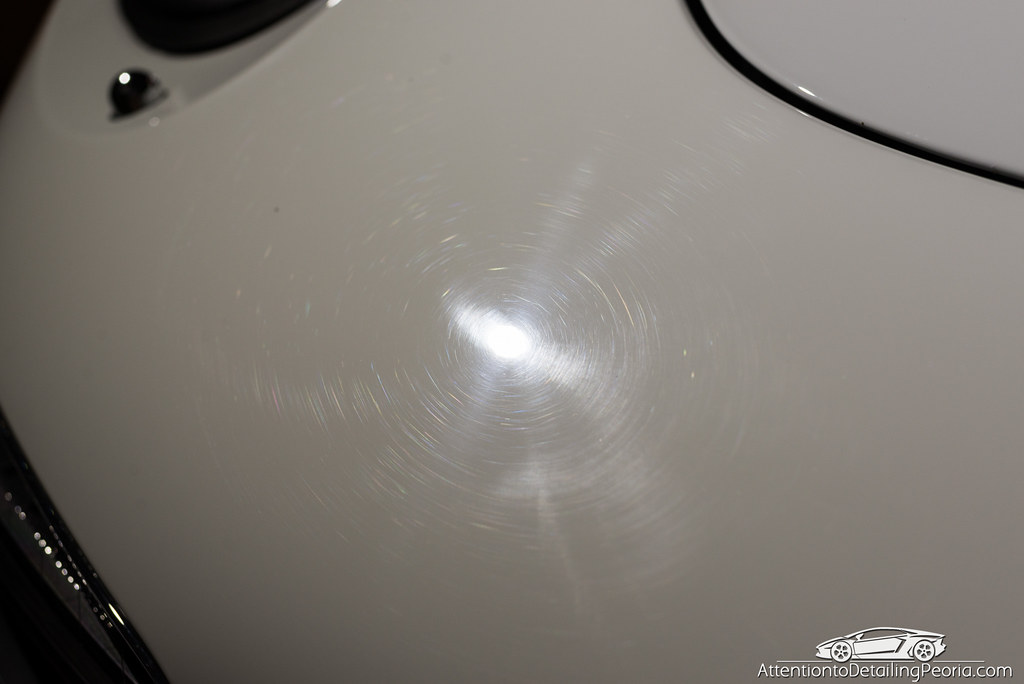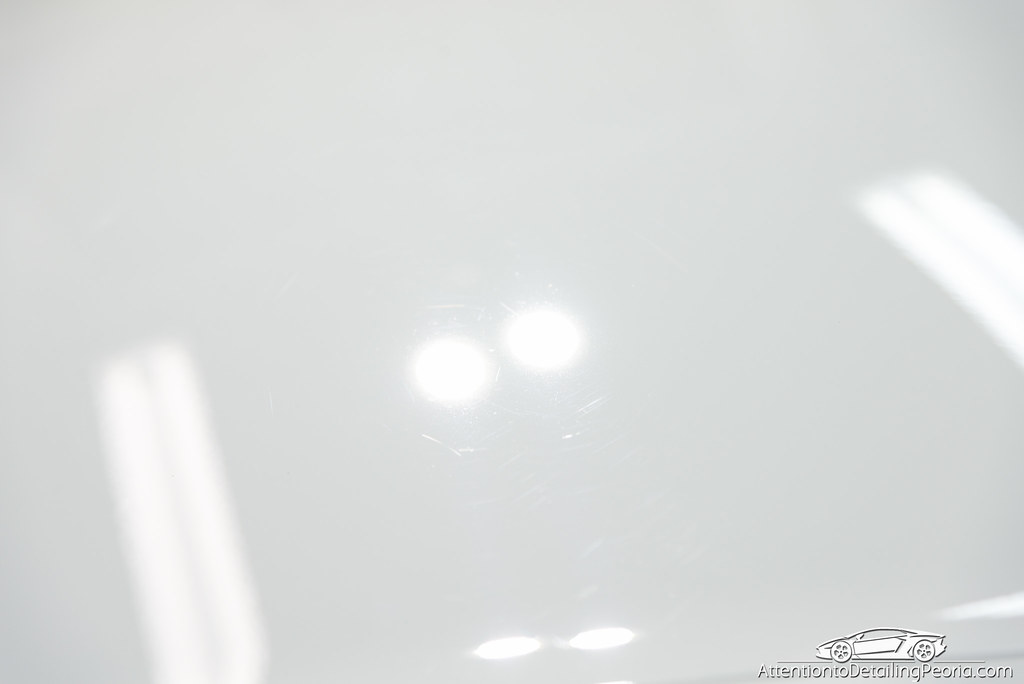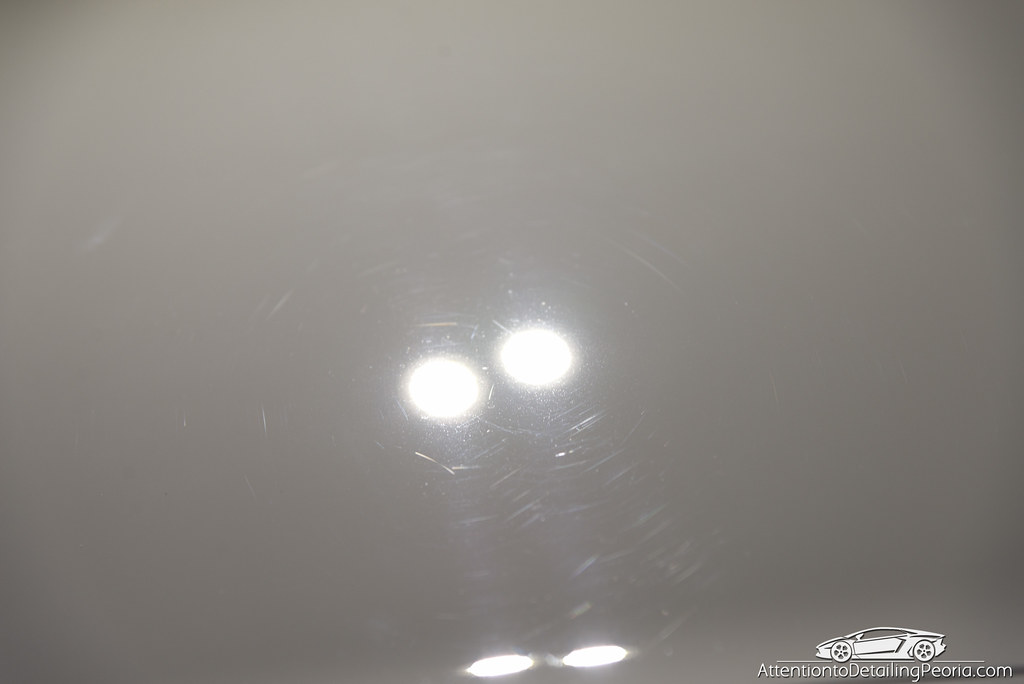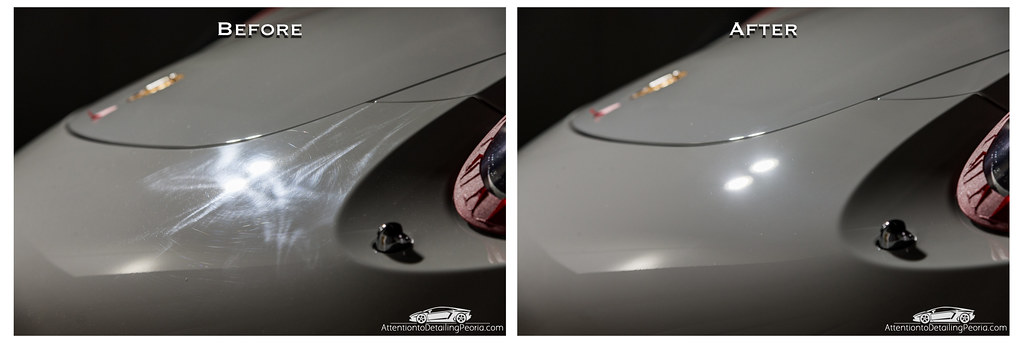How to Inspect Light Colored Paint
by Zach McGovernBeing able to properly inspect the paint you are working on is an extremely important part of your job as a detailer. If you’re performing a paint correction procedure on a vehicle without proper lighting, chances are your results will not be at the level they could be by using appropriate lighting. Identifying defects on darker paint is often quite easy as any direct light will highlight the swirls and scratches in the paint, but what do you do with light colored vehicles?

Using bright sunlight or high output inspection lights on lighter paint can be overwhelming to your eyes. The bright paint may appear washed out, like in the image below, which makes it very difficult to spot any of the defects you were expecting to see with your lights.

Light colored paint combined with bright ambient lights (overhead lighting) and even brighter inspection lighting (spot lights) creates an area that is simply too bright to see any detail. For me, the solution to inspecting and working on light colored paint is simple… turn off the lights! All of them except the inspection lights that is.
The following photo was taken with the exact same camera exposure settings and location as the previous image in this article, however the defects are more easily detected in this photo because I lowered the ambient light by turning off all of the overhead fluorescent lights and allowed the only real source of light to come from my inspection lights.

I will work in a completely dark room with just my inspection lights focused on the panel that I am working on. By reducing the ambient light to nearly zero, your inspection lighting no longer makes the paint so bright to the point where you cannot focus on it without straining your eyes.

Hopefully this quick tip will help you to easily improve your correction results with light colored vehicles.
Related Posts
- Using Handheld Lights for Paint Inspection: Brinkmann LED vs. Xenon
- 2014 BMW 750 LI: Removing Dealership Holograms
- 1999 Porsche 996: Paint Correction and 22ple HPC Coating
- 2016 BMW M4: Paint Correction Detail & 22ple Mistico Elemento Application
- 2015 Range Rover: Paint Correction and Gtechniq Crystal Serum Light Application








Hey, what kind of tape is that? Thank you.
Please excuse the “offtopicness” of my question lol. Nice article. I often work in the dark, regardless of the color. I find there is a calming aspect to working in dark as well.
Wow – surprised you even noticed the tiny bit of tape visible in the image. We use CarPro’s red masking tape.
The first time I found out how white paint can fool you into thinking you were defect free was the night after I did a light detail. Later that night getting gas in the dark, OMGosh. The gas station overhead LED lights highlited every single swirl, scuff & RIDS I thought I had corrected. FAIL 🙁
I thought the tape had little men on it? LoL!
Gas station lights are great for checking your work at night 🙂 same principle… dark ambient with bright spot lights.
Can you recommend any inexpensive inspection lights?
Well, as with most tools, you get what you pay for. Depending on what your budget is, there are plenty of great options for around $100-$150. My personal favorite light (the ones used in this video) is a DIY project that involves some photography gear and LED bulbs… you can email me if you want more information.
In Ammo’s lighting video with Richard Lin. Where can I find that same set up he had with the LED lighting he had?
After you find them, how do you repair them? I am new that is why I am not set up yet.
A paint correction process is used to remove the defects and restore the finish. Paint correction utilizes abrasive compounds and polishes paired with various pads and machines in order to level the surface (ie remove paint) to produce a flat, defect free finish. You can find plenty of information in other Ask-A-Pro Blog articles and also on our detailing guide found here (https://www.detailedimage.com/Auto-Detailing-Guide/)
Omg thanks. I had so much trouble trying to see any marring on a silver car. I went out and bought a 500lumen led thinking it would solve the problem lol
Happy to help 🙂
for reference, the inspection lights used in this article are 2800 lumens (1400 lumens / bulb)